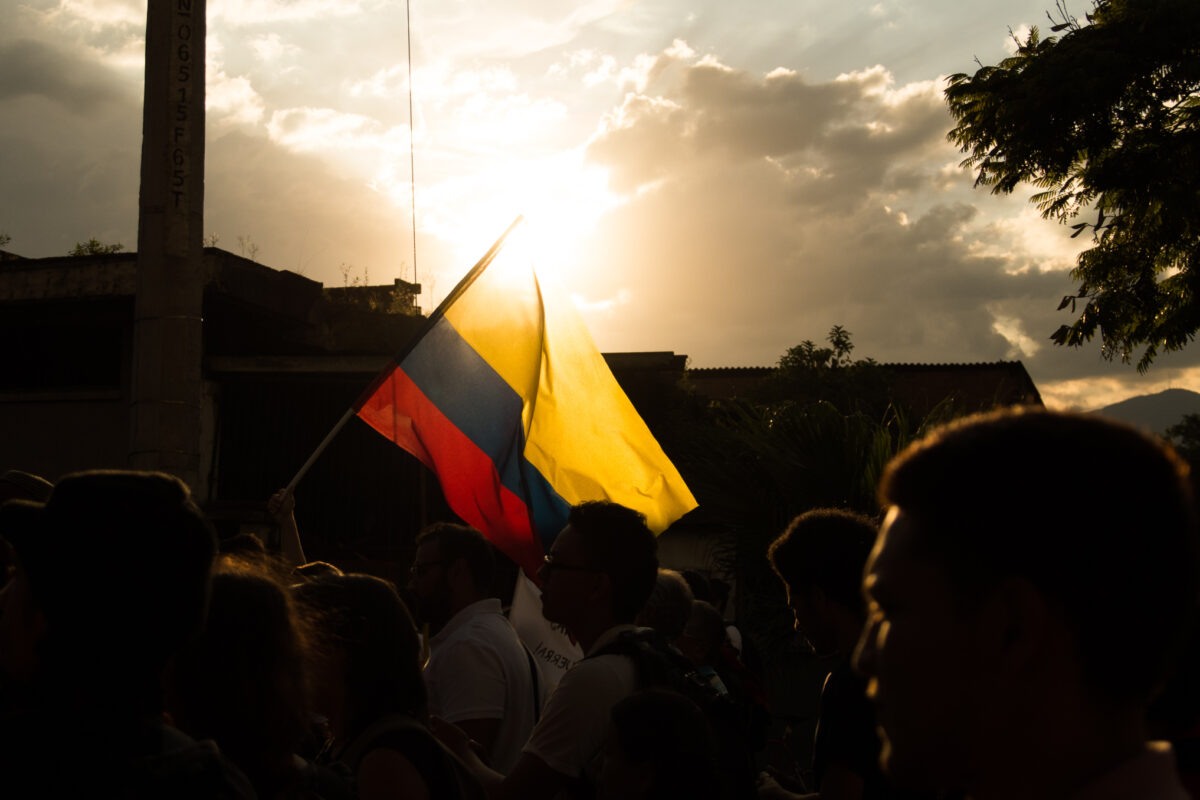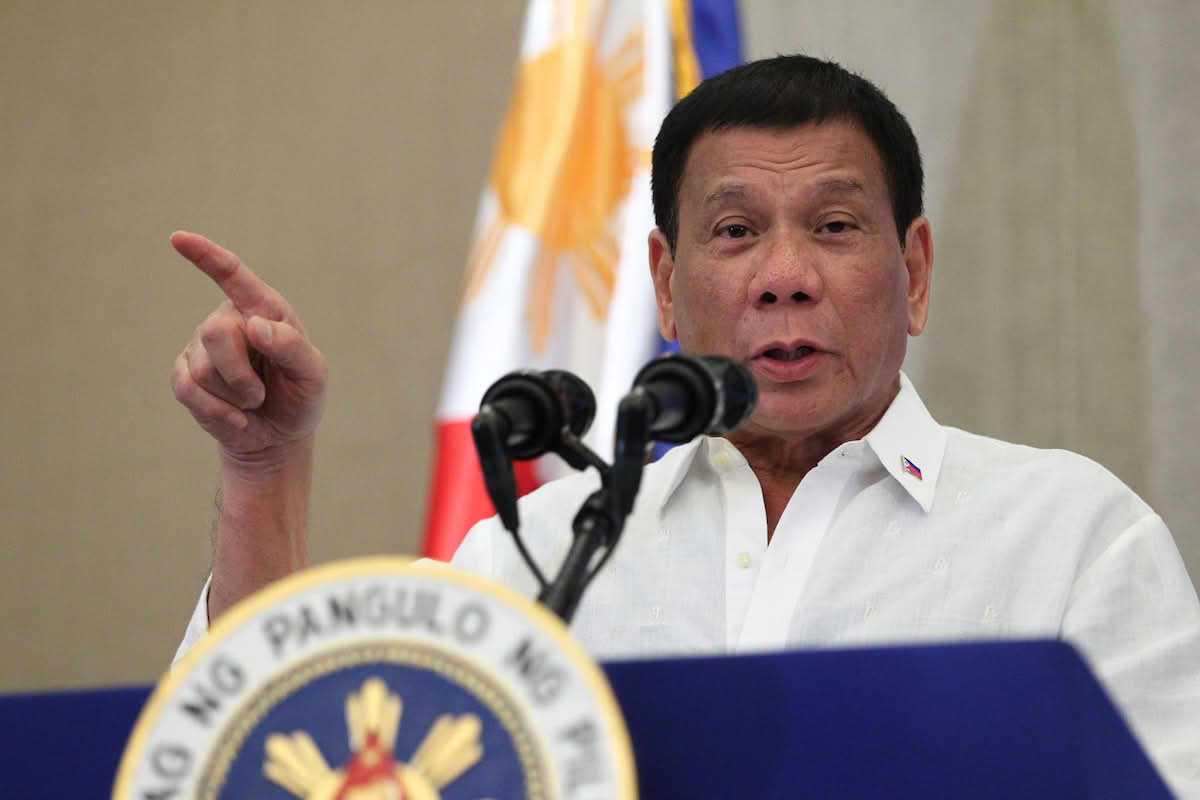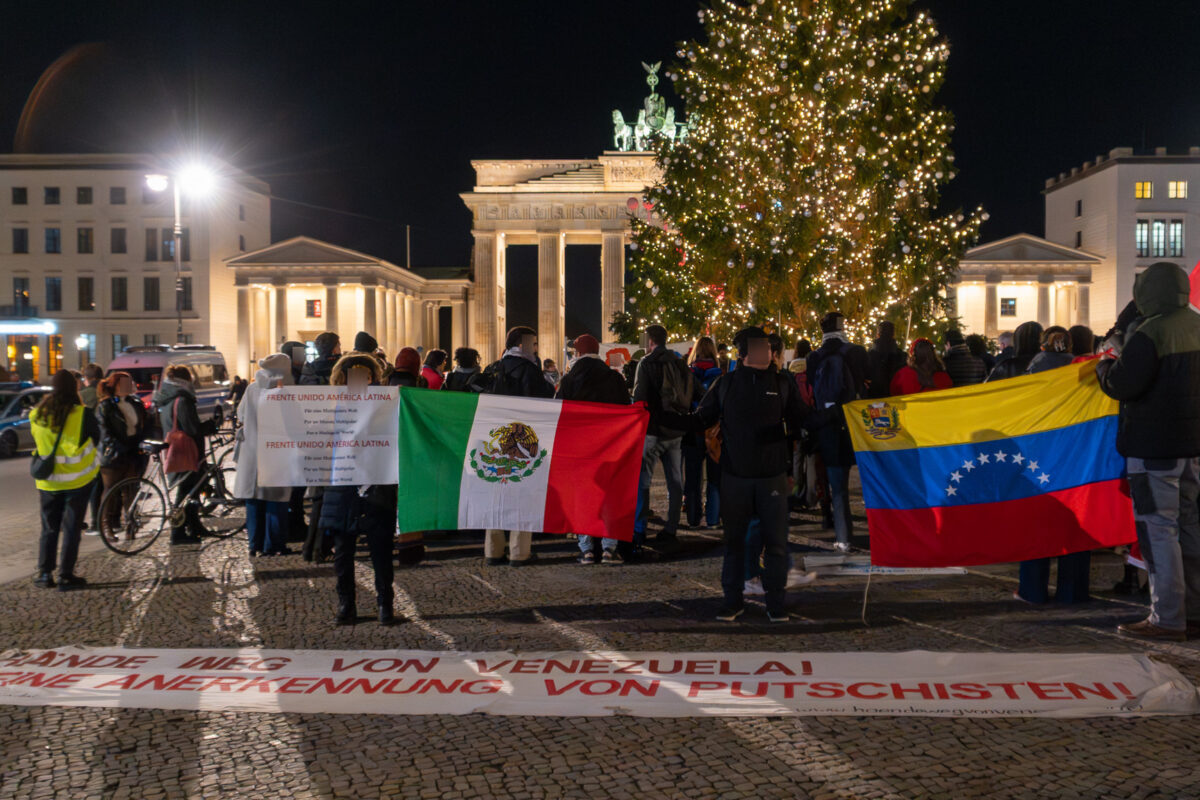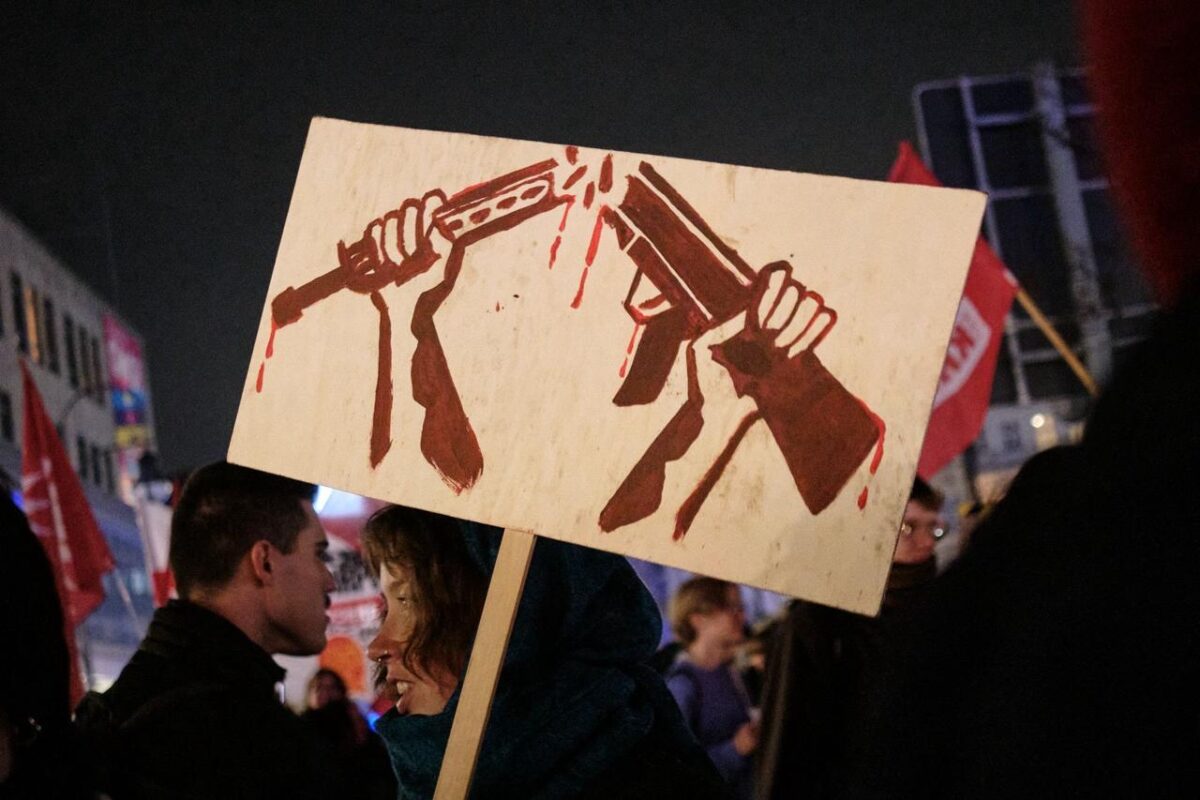About 24 people have died as a result of police violence in Colombia since late April. Hundreds more have been injured. Escalating protests against an unpopular tax reform that would put the burden on the shoulders of the poorest and the middle class, whilst exempting major businesses, are now reaching unprecedented levels.
A new social consciousness seems to be emerging amongst young people in Colombia. This new generation is no longer willing to put up with the great injustices that have been the order of the day ever since the country gained independence two centuries ago. It is a political storm, gaining momentum by the day.
The downfall of oil prices due to the pandemic is the main driver behind Colombia’s steep 7.1 point drop in gross domestic product. This decline has ripped a gaping hole in the national budget, which Duque is now trying to fill. His priority: preventing international rating agencies from downgrading Colombia’s credit rating.
Colombia: A peace process that isn’t one
People are taking to the streets, not only to vent their anger over an unjust tax reform that was ultimately withdrawn (it bore the sugar-coated name “Ley de Solidaridad Sostenible” (Law of Sustainable Solidarity), but also to protest against the “Uribísmo” brand of politics (named after ex-president Álvaro Uribe 2002-2010), as well as poverty and injustice. The protests also target human rights abuses, the government’s political polarization, call for the protection of threatened human rights activists, for the improvement of the social security’s safety net during the pandemic, for police reform, and much more.
These protests have a long history in Columbia mired in a deeply ingrained culture of violence going back for decades, but they also have to do with the 2016 peace agreement. This agreement was signed between Colombia’s government and the FARC guerrillas, intending to end the historic cycle of violence in the armed conflict known as la violencia (1928-1958) and the so-called “Colombian conflict” (1960-present). The agreement committed the state to social peace and a reorganization and reduction of the armed forces, none of which it has implemented.
The police, for instance, are under the direct supervision of the Ministry of Defense and not the Ministry of the Interior. Thus, there is no real separation between police and the military, and as such, the continuous militarization of the police remains unresolved. The conservative right-wing President Duque (in power since 2018) has so far been unwilling to implement demilitarization or any of the other commitments of the peace accord.
Large landholdings and poverty
Other sections of the 2016 peace agreement are in a similar state. This includes land redistribution and agrarian reform, as well as financial support for small farmers. Colombia’s biggest unresolved historical conflict remains the inequitable distribution of agricultural land ownership and its stark concentration in the hands of a select few large and wealthy landowners.
To date, hardly any of these measures have been implemented. Instead, assassinations of exposed activists continue unchecked and government structures continue to operate as if the peace agreement never existed. The power vacuum created by FARC’s absence in rural areas has been filled by criminal gangs and drug cartels. Military counterinsurgency measures are a key strategy in Colombia to guarantee the security of oil companies and protect the interests of large landowners.
Background – the protests of 2019
Duque’s conservative government is a big spender when it comes to keeping the internal war going. In Colombia, the government’s strong, well-equipped military and militarized police allow the suppression of mass-uprisings at any time, which ironically earned the country a reputation of political stability in the region, as far as the West is concerned. Another large portion of military spending goes into counterinsurgency efforts in rural areas, with active U.S. support.
Anger over the liberal economic policies of conservative governments in recent decades, high unemployment, poverty, unequal educational opportunities, the health care system, as well as violence and the ongoing murder of active civil rights activists by the police and security forces have grown steadily. Mass protests and demonstrations already erupted across the country in 2019.
A new movement is born in Colombia
Although the Corona crisis had initially interrupted these protests, it exacerbated existing problems. Under lockdown conditions, things kept fermenting.
The current general strike was initiated by the National Strike Committee (Comité Nacional de Paro) integrating various unions. In addition, the protests are being supported throughout the country by workers, students, countless young people, indigenous groups and environmentalists. For them, nothing less than the future of the country is at stake.
Indigenous people at the center
In Cali, a city of over two million people in the west of the country, the indigenous Misak demolished a statue of the city’s founder, the Spanish conquistador Sebastián de Belalcázar. To them, he is a symbol that represents the horrific and violent era of the Conquista. The indigenous people are protesting against a series of murders of indigenous social activists, massacres and the lack of security in indigenous territories.
Furthermore, protests are increasing against glyphosate aerial spraying, a fundamental strategy of the so called war on drugs. Indigenous and civil organizations have organized sit-ins and petitions. Duque recently reinstated a decree to reinstate these flights, which had been suspended in 2015.
No other country has a higher murder rate of environmental activists than Colombia. When land is developed for mining, agriculture, forestry, or dams to generate water and electricity, people who live there are often perceived as an obstacle to the companies’ plans. And these murders, usually arranged at the behest of these companies, are hardly ever investigated or prosecuted.
Young people, students and the “middle class“
In comparison with earlier events, a few things are new with the current protests: there is broader support and the unrest is better positioned than ever before. Protestors are also younger than ever: many of the protesters are minors, are active on the internet, and have been digitally politicized. Mobilizations and calls to the streets are being circulated on Twitter, Facebook, Whatsapp and Instagram. These are students, but also pupils, who are taking to the streets, fighting for their future.
The middle class is also on the streets. Colombia’s “middle class” is not comparable to Germany’s. Many do not make minimum wage. The number of those at risk of poverty has increased considerably with the pandemic. They are all driven by the fear of slipping further into poverty; a fear felt even deeper by the proposed reforms.
For the very first time, the capital’s elite private universities, such as Los Andes or Javariana, are not only encouraging their students to participate in the protests, but are actively organizing protests themselves. College administrations have publicly criticized police violence. This has never happened before. These are the top schools of the elite, who either attend them, or go to the U.S. for higher education.
State violence in Colombia
The state has reacted with inconceivable harshness. Buildings are on fire, the police are apparently firing indiscriminately at protesters. Ex-President Uribe, the leader of the ultra-conservative Centro Democratico party tweeted:
“Let’s support the right of soldiers and police to use their weapons to defend their physical integrity and to protect people and property from criminal acts of terrorism.”
This was not incorrectly understood as a call for violence against the protesters. The tweet has since been taken down.
Government under pressure
Defense Minister Molano toed the same horn, trying to discredit the protests as “criminal” and as “actions financed by the guerrillas” as well as a “terrorist threat”. Meanwhile, calls for Duque’s resignation are growing louder, facing a government that is under fast increasing pressure. Even national icons such as Shakira, Juanes, and Panamanian salsa king Rúben Blades have spoken out, expressing concern as well as calling the government to show moderation.
The role of the pandemic
Those who take to the streets despite the pandemic must have a good reason or be completely desperate. With a population of 50 million, over 75,000 people have died and 3 million have been infected in Colombia. During this past year, the number of people living in poverty has increased rapidly; today, 42 percent of Colombians live below the poverty line.
There are now nearly 7.5 million people living in extreme poverty in the country, i.e. lacking the minimum caloric intake to survive. In addition, there are more than 7 million internally displaced people due to exile and armed conflict.
The Colombian health care system has been privatized, and earlier government subsidies must now to be paid for by the insured. While the vast majority have health insurance, the state now stays out of the equation when it comes to costs, quality and coverage. The government is currently planning further changes, which are also being protested.
The enemy within
The implementation of the 2016 peace agreement with the FARC will be crucial. If the social demands it contains are not implemented, no social peace will ever be possible. Duque broke off talks with the other smaller guerrilla group ELN alongside the FARC in 2018. The guerrillas have since retreated back into the mountains, and their leadership have partially remained in Cuba after negotiations failed. Cuba is eager to continue mediating and the ELN has also signaled a willingness to talk. However, Duque unwaveringly insists on their extradition.
The extreme political right has lost its traditional scapegoat as a result of the peace agreement. Previously, any social movement could be summarily discredited as “guerrilla-sympathizing” or even financed by the guerrillas. Venezuela as an external scapegoat is not enough; the elite requires an internal enemy to blame.
Elections in 2022
Next year’s presidential elections will determine Colombia’s immediate future. The current climate of extreme political polarization will intensify. Overall, there will be fewer right-leaning and more left-leaning voters than in November. The center-leaning ones will be fewer.
This election will be decided between Gustavo Petro, a leftist candidate considered a radical because of his M19 guerrilla fighter past, who could attract a 42 percent share of the vote in the last general election, and his soon-to-be-determined opponent from right-wing conservative ranks.
The constitution prohibits Duque from running again. The right-wing candidate will almost certainly be hand-picked by former President Uribe, who remains the most powerful political force in the country.
First success of the protests
Uribe’s game is based on stoking fear of the specter of communism, fueled by the desperate economic situation in neighboring Venezuela. He has put his son Tomás into the political spotlight, and chances are he will be the candidate to face Gustavo Petro in the upcoming political battle.
Another option would be the current conservative vice president Marta Lucía Ramírez to run, but she would have no chance against Petro, according to current polls.
The fact that Duque has withdrawn his tax reform is seen as a success of the protests. In the meantime, further sociopolitical demands are being voiced. Will the current protests be strong enough to transform into a real mass movement capable of overthrowing the neoliberal oligarchic regime in Colombia? It is certainly too early to tell.
Solidarity with whom?
In any case, it is striking that Foreign Minister Heiko Maas (SPD) has remained silent in the face of the state’s deadly violence against protesters in Colombia. In contrast, during the attempted coup in Venezuela in 2019, he was quick to back the coup plotters and sanction state violence.
On the other hand, activists around the world have been organizing rallies and online actions for days, in solidarity with the protests in Colombia. In the coming days, the protests will continue also in Germany (we will update our Events page to let you know about planned actions in Berlin).
This article first appeared in German on the marx21 website. Reproduced with permission. Translation: Franziska Wöckel




